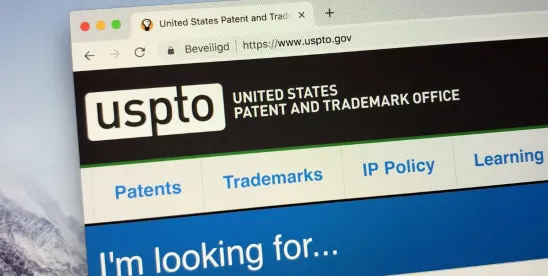The U.S. Patent and Trademark Office (USPTO) issued a notice of proposed rulemaking (NPRM) on April 19, 2024 aimed at codifying existing Patent Trial and Appeal Board (PTAB) practices while further improving “fairness, transparency, and efficiency in PTAB processes.” The proposals are the result of a 2020 Request for Comments and a 2023 Advanced Notice of Proposed Rulemaking, which collectively received over 15,000 comments. USPTO Director Vidal indicated her support for this NPRM, deeming it “an important step towards ensuring an efficient and streamlined patent system that will strengthen patent quality while limiting counterproductive challenges and costs.”
The America Invents Act (AIA) empowers the USPTO Director to institute, discretionarily, inter partes review (IPR) or post-grant review (PGR) proceedings (collectively, “AIA review” or “AIA proceedings”), under 35 U.S.C. §§ 316, 325, 326, which in turn has been delegated to the PTAB. Discretion to deny AIA proceedings often considers whether:
i. More than 1 AIA petition challenging the same patent is filed by the same petitioner at the same time as the first petition or up until the filing of the preliminary response in the first filed proceeding (“parallel petitions”);
ii. Additional AIA petitions are filed by the same petitioner (or privy or real party in interest with a petitioner) challenging overlapping claims of the same patent as the first petition after the patent owner has filed a preliminary response to the first petition (“serial” or “follow-on” petitions); and
iii. An AIA petition relies on the same or substantially the same prior art or arguments previously addressed by the USPTO in connection with the challenged patent.
First, the NPRM formally defines “parallel” and “serial” petitions in 37 CFR § 42.2.
Secondarily, and arguably most significantly, the USPTO proposes separating the briefing between the meritorious arguments of the preliminary response and a request for discretionary denial by the patent owner. The separate briefing on discretionary denial arguments, both that of the patent owner and the petitioner in opposition, would be limited to ten pages, with the patent owner’s sur-reply limited to five pages.
Further, the NPRM revises and clarifies provisions for the termination of proceedings. The PTAB may, on its own initiative, terminate a proceeding either before or after institution. Parties may also jointly move for termination of a proceeding before or after institution, when accompanied by a written settlement agreement.
Lastly, the USPTO seeks to codify specific factors in the discretionary denial of parallel petitions, serial petitions, and petitions based on previously present arguments.
For parallel petitions, a threshold showing of good cause is necessary before the Board will institute such a proceeding; considerations include:
(1) a petitioner's ranking of their parallel petitions in the order in which petitioner wishes the Board to consider the merits;
(2) an explanation of the differences between parallel petitions;
(3) the number of claims challenged by the petitioner and asserted by the patent owner;
(4) whether the parties dispute the priority date of the challenged patent;
(5) whether there are alternative claim constructions requiring different prior art;
(6) whether the petitioner lacked information at the time of filing the petition; and
(7) the complexity of the technology in the case.
In determining whether to deny institution of serial petitions, the USPTO looks to adopt factors four of the General Plastic factors:
(1) whether, at the time of filing of the first petition, the petitioner knew of the prior art asserted in the second petition or should have known of it;
(2) whether, at the time of filing of the second petition, the petitioner had already received the patent owner preliminary response to the first petition or had received the Board's institution decision for the earlier petition;
(3) the length of time that elapsed between the time the petitioner learned of the prior art asserted in the second petition and the filing of the second petition; and
(4) whether the petitioner provided an adequate explanation for the time elapsed between the filings of multiple petitions directed to the same claims of the same patent.
The USPTO considers the above to strike the appropriate balance between the perspectives and recommendations in previous comments. However, comments specific to this NPRM are due by June 18, 2024, and can be submitted in writing through the Federal eRulemaking Portal at www.regulations.gov.





 />i
/>i
